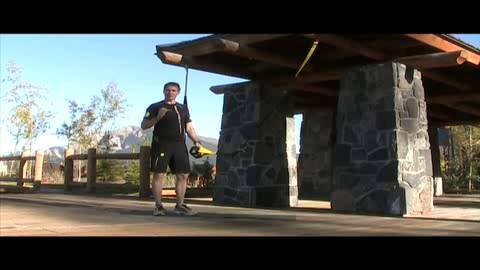This installment of Ask the Doctor is focused on another shoulder injury, frozen shoulder. Here, Dr. Perkash addresses a question submitted by a member of the TRX Community who trains a client with this condition and is wondering whether the TRX can be integrated into her workouts. Before continuing with specific advice, take our quick mobility assessment quiz to get personalized exercise recommendations suited for shoulder conditions.
TAKE OUR TRAINING QUIZ
Question:
I have a very fit client, a former competitive paddler, who has frozen shoulder, sciatica and disc problems. We are limited in the ROM she is able to move through at the hip. She wants to feel like she is working out and being challenged. Are there any specific TRX exercises that we should focus on to keep her challenged while not causing any further injury?
Answer:
Your client appears to have three separate distinct and medical issues that are limiting her rehabilitation program--a frozen shoulder, sciatica/disc problems and some form of potential hip pathology that is resulting in limited hip range of motion. As I have previously written articles focusing on lumbar spinal pathology and hip pathology, I will focus on her frozen shoulder for this response.
Frozen shoulder, or adhesive capsulitis, is a condition in which the capsule of the shoulder joint shrinks and becomes inflamed, usually as a response to some other injury of the shoulder. After injuring the shoulder or after shoulder surgery, it is not uncommon for an individual to immobilize the shoulder, either in a sling or simply keeping the arm down at the side and not raising the arm overhead for some extensive period of time--usually weeks to months. Keeping the shoulder relatively immobilized for even a few weeks can result in shrinking of the shoulder joint capsule and subsequently an escalation of pain with attempted range of motion of the shoulder.
Treatment of adhesive capsulitis involves gentle, progressive range of motion exercises, modalities such as heat, ice and ultrasound, anti-inflammatory and pain medications, steroid injections and rarely manipulation under anesthesia in rare cases. Surgery is also rarely required. Usually full recovery can take as long as one year, even with aggressive rehabilitation.
It is important for an individual to have a thorough evaluation by an appropriately trained musculoskeletal/shoulder specialist (Orthopedic Surgeon, Physiatrist/Physical Medicine & Rehabilitation, or other Sports Medicine specialist). Other sources of shoulder pathology should be ruled out such as a rotator cuff or labral tear or any fractures usually with a combination of a careful history, physical examination and imaging studies including X-rays and an MRI scan. A frozen shoulder usually involves extensive physical therapy under the guidance of a physical therapist, under the direction of a physician. If the condition is too painful to participate in physical therapy, medications or possibly shoulder injections can be implemented by a physician to help reduce inflammation and facilitate the rehabilitation program. Sometimes alternative therapies such as acupuncture can help with pain control as well to aid in the rehabilitation program.
Once a physician has cleared an individual to participate in a shoulder rehabilitation program, exercises can begin with a focus on first improving range-of-motion of the shoulder and subsequently strengthening the shoulder and shoulder girdle musculature. The TRX Suspension Trainer can be used quite effectively in the Sports Medicine realm for the rehabilitation of a frozen shoulder. The TRX Shoulder Series (see video below) can be quite useful in the rehabilitation of a frozen shoulder.
With multiple areas of pathology including the shoulder, lumbar spine and hip, your client absolutely needs evaluation by a musculoskeletal specialist for guidance with her rehabilitation program. It is always important to seek treatment and guidance from a physician and physical therapist when participating in a rehabilitation program after injury to achieve the best results in a safe and effective manner.
For more on how TRX Suspension Training bodyweight exercise is a safe, scalable and effective solution for you or your patients, visit our Sports Medicine page and download our White Paper.
NOTE: Any medical information in this blog is of a general nature and not a substitute for the advice of a medical professional. If you need medical advice, see a doctor.


